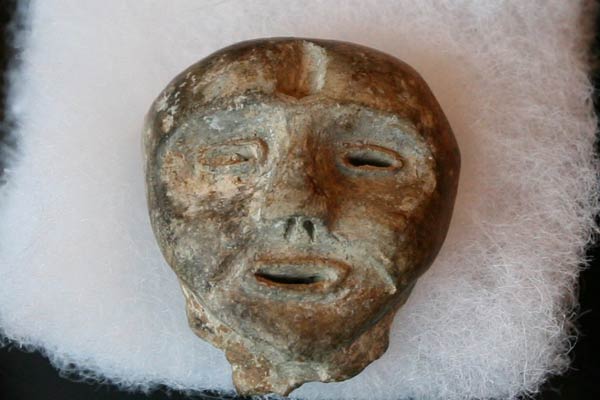
Ron Williamson and the Curse of the Axe
Published: July 31, 2012
Today it’s the peaceful, suburban landscape of Ontario’s Whitchurch-Stouffville. But in 1500 AD it was an ancient city known as Mantle – wielding all the significance of a bustling modern metropolis.
“[Mantle] is the largest, most complex, cosmopolitan village of its time,” says Ron Williamson, adjunct professor in the University of Toronto’s Department of Anthropology.
In popular culture, archaeology is something reserved for exotic locations across the ocean. And the ancestors of today’s First Nations peoples are usually depicted living in small and disorganized villages.
However, Mantle is believed to have been five times larger than the average village at the time. The metropolis revealed remnants of 98 wooden longhouses which would have accommodated 1,500 to 1,800 individuals. (See reproduction longhouse at left.)
Williamson, the founder of Archaeological Services Inc., was hired by a development company to perform a routine check on the land. Upon arrival his crew immediately unearthed several artefacts; Williamson knew his team had found something special.
More than 200,000 items have been uncovered to date.
Mantle is a massive site – encompassing 10 acres – and there is much excitement surrounding the huge data set it provides. The data will be crucial for shedding new light on the Huron-Wendat people who inhabited Mantle during the early 1500s, says Williamson.
And then there’s the mystery of the axe.
Williamson’s team uncovered a piece of iron that caused a commotion when it was identified as the remnants of an axe of European origins.
If Mantle was settled in 1500, how did a piece of European iron make its way to the city – a century before the first noted European-Native contact?
“It seems to be a game-changer in every way,” says Williamson.
The Mantle excavation and the many questions surrounding the axe is the subject of a recent documentary, Curse of the Axe, which recently aired on History Television and can now be found online (History.ca).
Film is the perfect medium to connect with the general public, says Williamson.
“Archaeology is remote, there isn’t much effort to connect the academics with the general public," he says. “Disconnection occurs because we don’t have a process to easily relate with the general public.”
The Curse of the Axe is now providing that connection and Williamson is delighted by the public interest.
“I’ve received hundreds of emails after the documentary aired from viewers who had questions,” says Williamson, adding the film helps dispel the myth of simplicity among Canada’s First Nations.
“I want people to understand that the history of this area is complex, and that in 1500 AD the Huron people were living in sophisticated, well-organized, urban planned communities that rival medieval times in Europe,” says Williamson (pictured below with a woodpecker pipe found at the dig).

“Then we’d understand that our history is just as interesting as anywhere else.”



